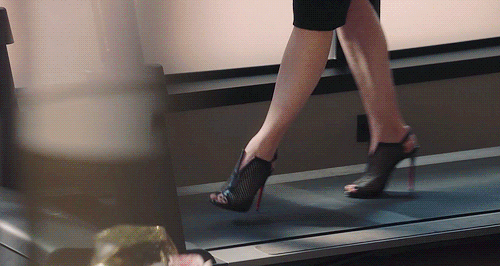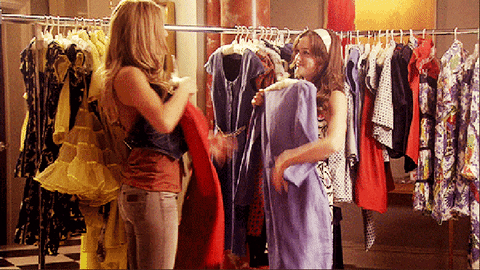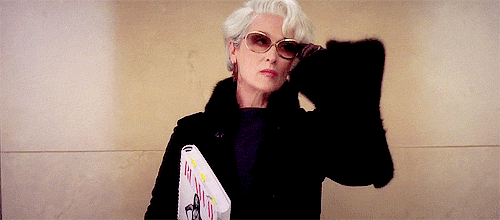/shethepeople/media/media_files/fb0wiEU903jxfrFmmsf4.png)
Vineeta Singh, Zeenat Aman, Nirmala Sitharaman
A closet full of clothes and nothing to wear. Admit it girls, we’ve all had that fash-fog moment or umm should I say moments. Can be quite an issue at crucial events where you need to achieve results while getting your point across – office meetings, job interviews, client pitches, PR events, public speaking ops, official dinners or orientation seshs.
Fifty-eight per cent of the first impression, according to research, is the way you look, which means power dressing is karma and you have to do it right. How do we define right though? The androgynous suit in neutrals or an unconventional Indo-western in pastels? The rulebook office look or the self-styled casual statement? Feminine or unisex? All out or muted? What about make-up and accessories? Anything, oh anything to not look like a clueless ‘fashion victim or ensembly-challenged.’
You could always play safe and have Miranda Priestly go: "Florals? For spring? Groundbreaking" or, OR you could add a Dua Lipa, Zendeya, Jennifer Lawrence, Nandita Das twist and come up trumps in both: unique style and substance!
That’s to say a satin slip dress with an oversize leather jacket. A perfectly fitted black suit with a leather tie and a plum shirt. Black flip-flops with a red Dior gown. An elegant gold linen sari. The realistic answer you and me are looking for, however, lies somewhere between the 1920s Chanel suit that revolutionised the power equation of gender dressing and today’s Gen Z dress code which challenges rules in favour of “comfort and self-expression.”

Fashion historian Valerie Steele thinks, “Fashion is probably one of the most immediate forms of visual culture… over time, people have recognized that it provides such a mirror to the way we think, our values and attitudes… The item of clothing that makes us feel powerful is the one that magically makes us look our best in all kinds of circumstances.”
JPMorgan Chase, Goldman Sachs and a whole lot of global FMCGs that endorse Friday dressing eased their dress code in the past few years to suit the smart-casual era -- a giant leap from the 70s and 80s when the term “power dressing” became an established fashion style among working women primarily aimed at “defining themselves in a man’s world.”
Today it’s all about women being women in form, fit and finesse – filter-free. The 5 Ps that have broadly come to define this phenomenon start with:
Personality: where you “don’t change to fit the fashion, but change the fashion to fit you.” Where your preferences and physique play an important part in what you wear, so a tailored business suit is as impactful at an official conference as a comfortably draped sari at the editorial meet. “Comfortable in your own skin” is the new normal and offices have started to acknowledge fun and formal, chic and cool, easy-going and eclectic.
Purpose: Since fashion “is what you buy, style is what you do with it,” having a clear sense of purpose is reflected in one’s choice of clothes. Psychology points to the fact that “clothing can be aspirational, representing a sense of belonging for the individual and should be mindful of the dress codes that “reflect the general image and values of an organization” and the cultural milieu.

Presentation: Defying a whole bunch of old concepts, one corporate-workwear blogger suggests smart sneakers, V-necks, sleeveless tops and even bold prints to elevate style and dress for success. It’s all in the way you present it. The way you can mix and match. Sometimes monochromatic is the way to go, while at others, investing in “out of the box” ensembles is also, she affirms, an effortless way to project dominance while switching from am to pm wear effortlessly.
Planned: Capsule wardrobes and power dressing apps have made “fashion the armour to survive the everyday reality of life” so that “the woman inside us can come through” in actionably plush dressing. The eco-conscious work wardrobe today effortlessly pairs staid staples with versatile vignettes as pre-designed branding statements in the versatile office environment. If you are ready to put in the planned work, the results are astounding be it fragrance or footwear; bling or bag.
Professional: Your fashion style is “a way of saying who you are without having to speak,” so the power of good office wear can never be underestimated. A strong-shouldered silhouette can be forceful yet feminine, just as an elegant salwar kameez can ooze authenticity and authority with equal panache. Designers now pay close attention to “tradition and heritage to celebrate woman in leadership roles with nuanced power dressing.”
The ensemble apparently “reflects our cognitive abilities for the upcoming day” and influences our physical, as well as mental state. Psychologists call it enclothed cognition. The symbolism behind what we wear and why we wear it cannot be brushed aside. Studies confirm that “the dress” even affects performance and plays a big role in critical thinking, creativity and problem-solving ability.
Confidence and attitude are the new accessories in the bold era of fashion where there are no rules. Nandita Pandey’s Dressology: The Science of Power Dressing, talks about how “dressing according to the job profile and the organization’s culture” is a crucial survival skill in a challenging environment. You got to do it right by you girl. Adapting workwear to look as mod and as multifaceted as the women who wear it is your power tool.

“The clothes we choose to wear — and how we choose to wear them — send out messages that reveal many aspects of our personality and emotional well-being,” reveals an NYT article. “This decision‐making process is affected by a host of mental messages that a woman receives during the course of her life.” It’s that big a deal! We are what we wear – independent, self-assured, ambitious and full of verve! Fashion is an instant language believes Prada, go on, speak your mind girl!
Views expressed by the author are their own
/shethepeople/media/agency_attachments/2024/11/11/2024-11-11t082606806z-shethepeople-black-logo-2000-x-2000-px-1.png)
 Follow Us
Follow Us